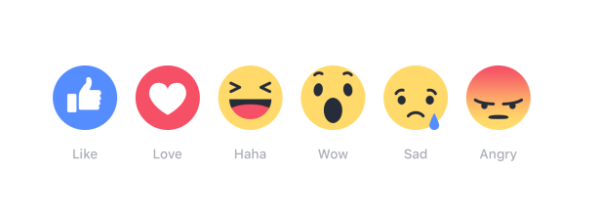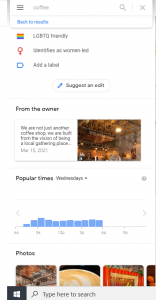
Facebook Reactions, introduced a year ago, have started to improve brands’ ability to engage with followers, understand their audiences and improve content strategies.
The emoticons have been used a total 300 billion times. While that sounds huge, Facebook reportedly generates about 4 million Likes per minute. Use of the emoticons will likely continue to grow as Facebook users become more comfortable with them. The U.S. ranks eighth on a list of the countries that use reactions the most. It’s preceded by Mexico, Chile, Suriname, Greece, Paraguay, Costa Rica, and Belize.
Greater Reach on News Feeds
Facebook Reactions include a bevy of emoticons for relaying emotional emotions, including love, laughter, happiness, surprise, sadness and anger. Despite requests, there is no dislike button, although Facebook is reportedly testing a thumbs-down symbol in its Messenger app.
The emoticons may help marketers improve their reach on news feeds. Facebook recently tweaked its news feed algorithm to assign more weight to the icons than the simple thumbs-up like. The company believes reactions indicate a stronger signal, or a greater emotional response than likes.
A Like is the default interaction and is a vague indicator of interest. Since reactions require a long press or hovering action, they indicate stronger emotions, as TNW points out. Importantly, all reactions are still weighed equally to one another, including temporary reactions created special for holidays and special occasions like Mother’s Day.
Measurement Capabilities – and Complications
The symbols can help marketing and PR better understand audience responses to posts, better understand customers’ feelings, and improve content. A significant number of angry reactions could warn brands of an impending PR crisis and signal the need to act quickly before it spirals out of control.
The symbols have improved measurement capabilities, but they have also made life more complicated for brands. In the old days of 2015, marketers only had to add up likes and shares. But now, reactions can signal either positive or negative sentiment, depending on the post. The variety of emotional possibilities require greater nuance to avoid misinterpretation.
“With reactions, there are not only more choices to measure, but there’s also a new concept that marketers will need to embrace: intent,” says Chris Kerns, vice president of research & insights at Spredfast, a social software platform. Kerns provides an example of the danger in an article for Marketing Land.
A Tale of Two Posts
A post from the Seattle Mariners congratulates superstar second baseman Robinson Cano on the birth of his daughter. As expected it garnered positive responses – 13,000 likes and 1,300 loves but also a handful of laugh reactions.
A post from Tesla that warned of the world’s rising CO2 levels, citing data from Climate Central, prompted a large number of sad and angry reactions but also a few laugh emoticons. Kerns classified the laugh emoticons as support for the Mariners post, but as opposition for the Tesla post. Laugh reactions should be interpreted as people mocking its cause.
To measure reactions properly, Kerns recommends setting an emotional target for the audience’s intended response. Depending on the post, marketers may seek laughter, sadness, love or even anger.
“While Facebook Reactions add an extra layer of complexity to reporting, the data and insights you’ll get out of an emotion measurement plan will steer your team to create better content than ever before,” Kerns concludes. “And for data-driven marketers, that’s nothing to laugh at.”
Bottom Line: A year after their introduction, Facebook Reactions are enabling marketers to improve engagement and measurement. As the emoticons become more popular over time, they will add depth to brands’ measurement capabilities. The symbols also make measurement more complicated. Classifying reactions as support or opposition can be tricky.
This post was originally published on the Glean.info blog.
Digital & Social Articles on Business 2 Community(93)






